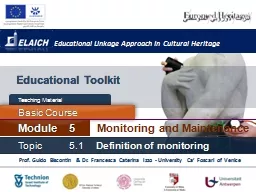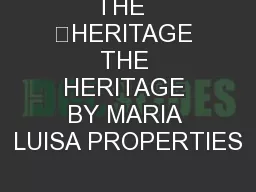PPT-What, if anything, do visitors to heritage properties learn?
Author : myesha-ticknor | Published Date : 2018-10-30
Julie Charlesworth John Hackston The sample Visiting the properties Reasons for visiting Group differences Women are more likely to choose On holiday in the area
Presentation Embed Code
Download Presentation
Download Presentation The PPT/PDF document "What, if anything, do visitors to herita..." is the property of its rightful owner. Permission is granted to download and print the materials on this website for personal, non-commercial use only, and to display it on your personal computer provided you do not modify the materials and that you retain all copyright notices contained in the materials. By downloading content from our website, you accept the terms of this agreement.
What, if anything, do visitors to heritage properties learn?: Transcript
Download Rules Of Document
"What, if anything, do visitors to heritage properties learn?"The content belongs to its owner. You may download and print it for personal use, without modification, and keep all copyright notices. By downloading, you agree to these terms.
Related Documents














